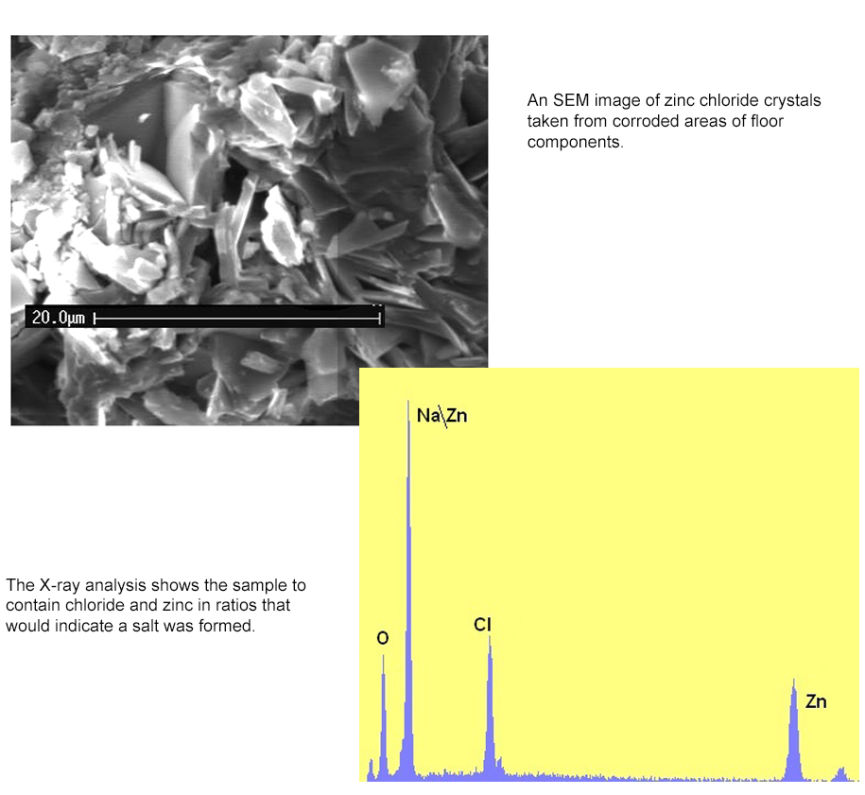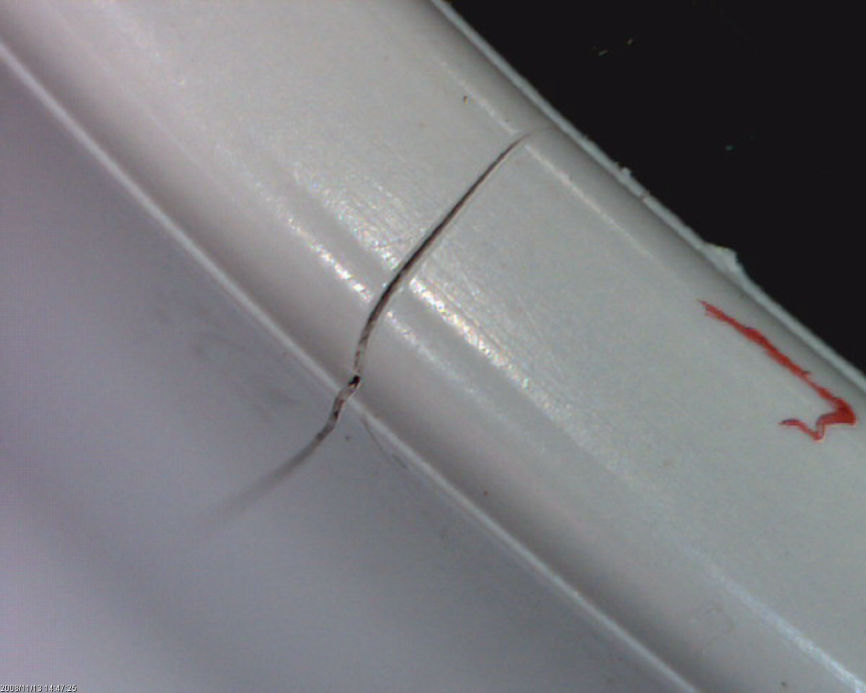Excessive ozone levels caused polymer degradation in sound-deadening foam
Sound-deadening foam was degrading rapidly, becoming brittle and shedding particles, and no longer fit for purpose. A site visit identified the problem as excessive ozone concentrations and traced the source to electrostatic dust precipitators. These were overloaded by high levels of particulate contamination due to poor primary filtration. The ozone in turn reacted with the polymers in the sound-deadening foam, converting the top layer of a normally spongy, resilient foam, into a brittle, dusty surface. If left unresolved, the same degradation reaction would have caused reliability problems within servers by degrading insulation polymers used in their construction, for example wire sleeves.
Toxic mix of chloride corrosion and moisture
A client was experiencing failures that were traced to surface conductivity on circuit cards. The circuit card manufacturer’s own laboratory investigation found no fault but noted the presence of sodium chloride. We also found sodium chloride crystals within computer cabinets and, along with zinc chloride crystals, in corrosion products on raised floor components. Experience tells us that sites located up to 25 miles from the sea, can, depending upon the wind direction and other external environmental factors, be subject to aerosols containing salt. We concluded that the zinc was being corroded by chloride ions. The problem was intermittent because it depended on the presence of moisture in the room. When a particular humidity/temperature threshold was reached, the conductivity of the metal-salt crystals increased on the card surface and caused shorting. The fact that the problem was humidity-dependent explained why the manufacturer did not find the fault under their more constant and drier laboratory conditions. We advised the client to ensure that the humidity/temperature in the room remained within a particular range.

Fumes from modelling material formed a salt and corroded tracks on cards
A client was experiencing a number of computer breakdowns. During a site visit, we noticed that all copper pipes, including those in the washroom, were dark brown caused by a film that was later proved to be copper bromide. The client’s business involved making large models out of a type of moulding material that released small amounts of bromine vapour. An EDX analysis confirmed copper bromide crystals were formed by corrosion of the tracks on the circuit cards. The solution was to change the room airflow, so that the fumes from the modelling material were directed away from any IT equipment.

